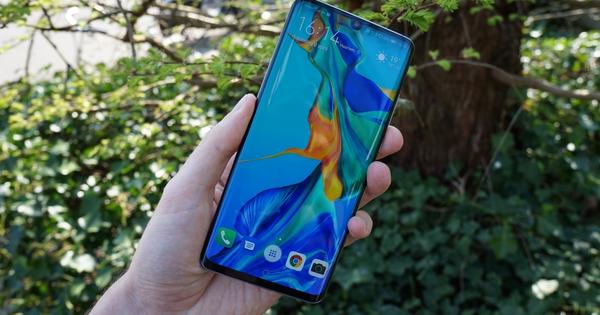Windows 10 S is a new version of Windows 10, in addition to the existing Windows 10 Home and Pro versions. Windows 10 S should be more secure and energy efficient, but you pay a high price for functionality in terms of functionality. You can read in this review whether it is worth it.
Windows 10 S
Price: Not yet knownLanguage: Dutch
Website www.microsoft.com 5 Score 50
- Pros
- economical
- safer
- office
- Negatives
- Edge
- Store offerings below par
- bloatware
Windows 10 S reminds me a lot of Windows RT, which appeared at the same time as Windows 8 and ran on the first Surface tablet at the time (2012). Windows RT was a version of Windows that was developed to run on ARM processors, which are typically found in smartphones and tablets. These processors may be a lot more energy efficient, but they are not capable of running traditional Windows programs. Windows RT could therefore only install apps from the empty shelves of the new Store. Windows RT ended up flopping worse than Windows 8.
Windows 10 S shares many similarities with Windows RT - and Windows 10, of course. Also in this Windows version it is not possible to install your trusted programs (Win32) outside the Store. Again you are dependent on apps from the Store. For example, Windows can work more energy-efficiently, partly thanks to the fact that Win32 programs can nestle a lot deeper in the system as a background process, unlike apps. Likewise, it is much more difficult for malware to infect Windows systems.
There is also a difference. Windows 10 S is not tied to ARM processors, and can therefore be upgraded to another Windows 10 version, whereby you can simply install programs outside the Store. The Store has also had a few years to mature. But is the time right for such a Windows version?
Want or user need?
During testing, however, I quickly wondered what the raison d'être of Windows 10 S is. The concept of this Windows version seems more like Microsoft's desire to bind people to its own services and application store, not so much the user's needs. This wish is practically covered with a veil of the only advantages: safety and energy efficiency.
Because Microsoft services, you are bound to that with Windows 10 S. All these services are simply present, as you are used to from Windows 10. OneDrive, OneNote, Skype, etc. If you use Office, you can (recently, fortunately) pick the Office 365 package from the Store. Do you have all your eggs in the Microsoft basket and do you install few applications? Then Windows 10 S offers many advantages.
You should actually think of Windows 10 S more as Microsoft's version of Chrome OS.Chromed
You should actually think of Windows 10 S more as Microsoft's version of Chrome OS. Google's operating system, which runs on many (mainly cheap) Chromebooks. Especially in education, these Chromebooks have conquered a place. With Chrome OS you are placed in a warm bed of Google services, updates are automatic and installations are only possible from a curated store, which in turn benefits speed and security. Broadly speaking, similar to Windows 10 S.
But it still feels like you're working with a broken machine. This is mainly because you are used to the freedom when you work with Windows and a huge range of software. The pain of limitations is somewhat alleviated on Chrome OS by a good browser with an extensive range of extensions. That's exactly the pain point of Windows 10 S: the browser and application store are definitely not ready for an operating system that depends on it.


Habituation
Windows is so much better or more productive thanks to other people's programs. Programs that you will not find as an app in the Store 99 times out of 100. For me personally, that goes one step further: Windows 10 is only workable for me after the installation of Chrome and Classicshell, because the Edge falls short as a browser and the tiles of the start menu are a thorn in my side. But it's the vast array of third-party tools that Windows needs, cutting out the installation option makes it feel a bit like working with a Swiss Army knife with only the corkscrew on it.
It feels a bit like working with a Swiss army knife with only the corkscrew on it.The offerings in the Store are still very much lacking for Windows to lean on. I've been hearing for years that the range of applications will be fine. But faith in this has withered in me. Google applications? Forget it. Also, I couldn't find decent replacements for other programs I use every day, such as Paint.net, Irfanview, Classicshell, Steam (and its games), WhatsApp, and so much more. Fortunately, Microsoft has managed to make Office available for Windows 10 S. But to my great frustration, only the entire package, including Access, Publisher, OneNote... While I really only use Word, Excel and Outlook.
By the way, it is possible to get free apps from the Store without having to log in with a Microsoft account. That's very nice and logical actually, why can't the Android and iOS application stores just do this?
Fortunately, when you connect hardware, the drivers are also (automatically) installed for this. Provided the hardware is suitable for Windows 10 of course.

Browser lack
Also, the Windows 10 (Edge) browser is far from ready for the task as the default browser. I miss synchronization with my other devices, a wide range of extensions and it is functionally rather limited. And as fast and economical as Microsoft claims (compared to other browsers in Windows 10), I simply don't experience Edge.
We also encounter another disadvantage of Windows 10: bloatware. I am not talking about the Microsoft services, which you can expect on a Microsoft operating system. But bloatware such as Candy Crush, March of Empires and Royal Revolt are simply pollution on an operating system for which you as a user have already paid money. This includes the built-in advertising in Windows Spotlight. Users simply pay double in this way.

Target audience
So far a pretty critical story from someone for whom Windows 10 S is not workable. But the operating system is not the goof one might suggest after reading the above words. Anyone who likes to get everything out of their machine will experience the same as I do. But for people who are not so tech-savvy (and therefore often infect their Windows system with malware), employees who have limited administrative access rights, and students who need a fast and energy-efficient device for Office, Windows 10 S is a great choice. After all, little can go wrong due to the limited installation rights.
Conclusion
Those who work with Windows for years will have to get used to Windows 10 S. You simply miss the freedom to install all kinds of useful programs. But there is certainly a target group for it, Chrome OS has already proven that, because you can actually compare it better with that, instead of a full-fledged Windows version. Still, I don't think the time is right for Windows 10 S. Too much responsibility is placed on a browser that is much too limited and an application store that falls seriously short.
Upgrade
Have you (bought) a system with Windows 10 S on it? Then you can upgrade it to a full Windows version. This doesn't require a full reinstall, so you won't lose any data. Until 2018 you can do this for free. After that you have to make the cut: 79 euros.


